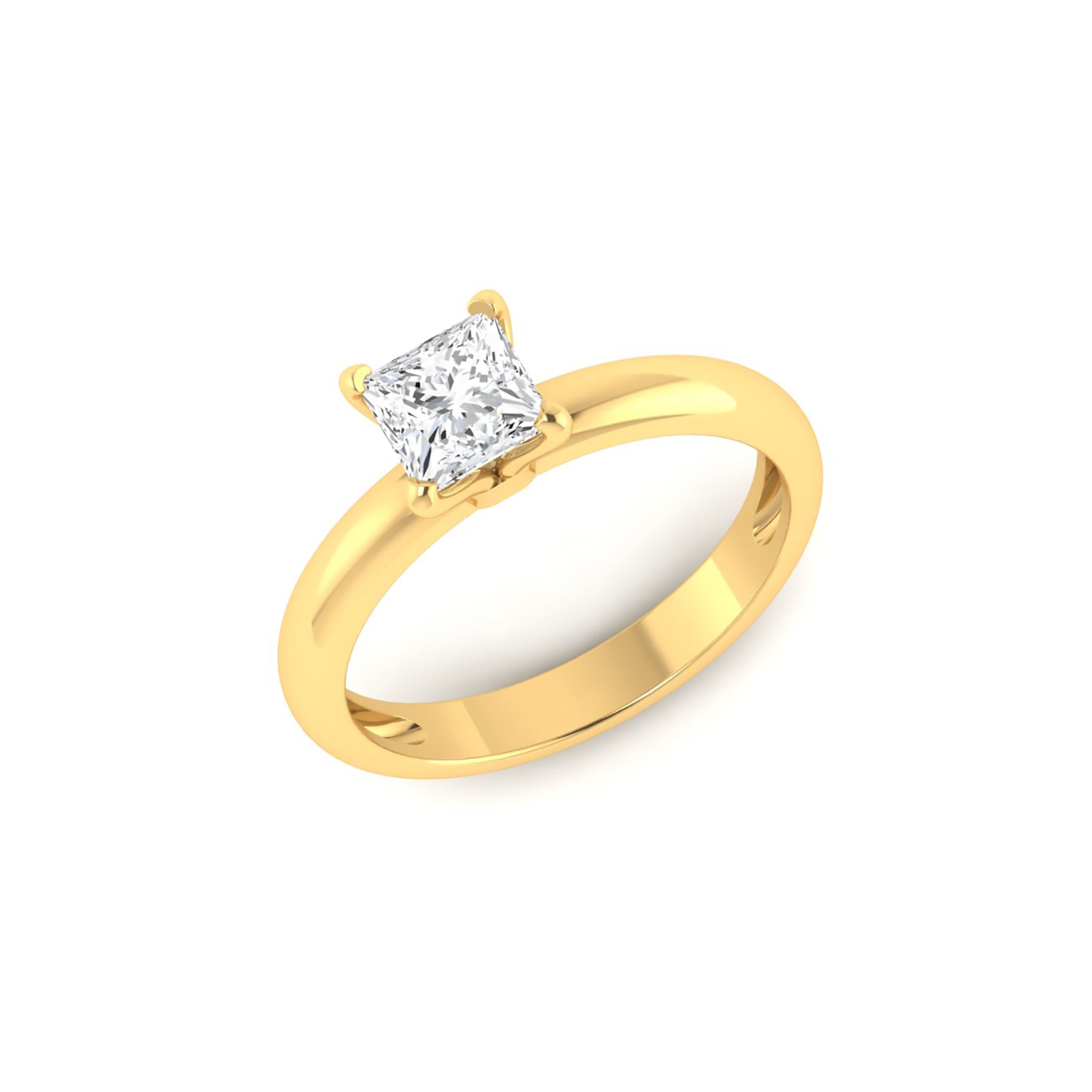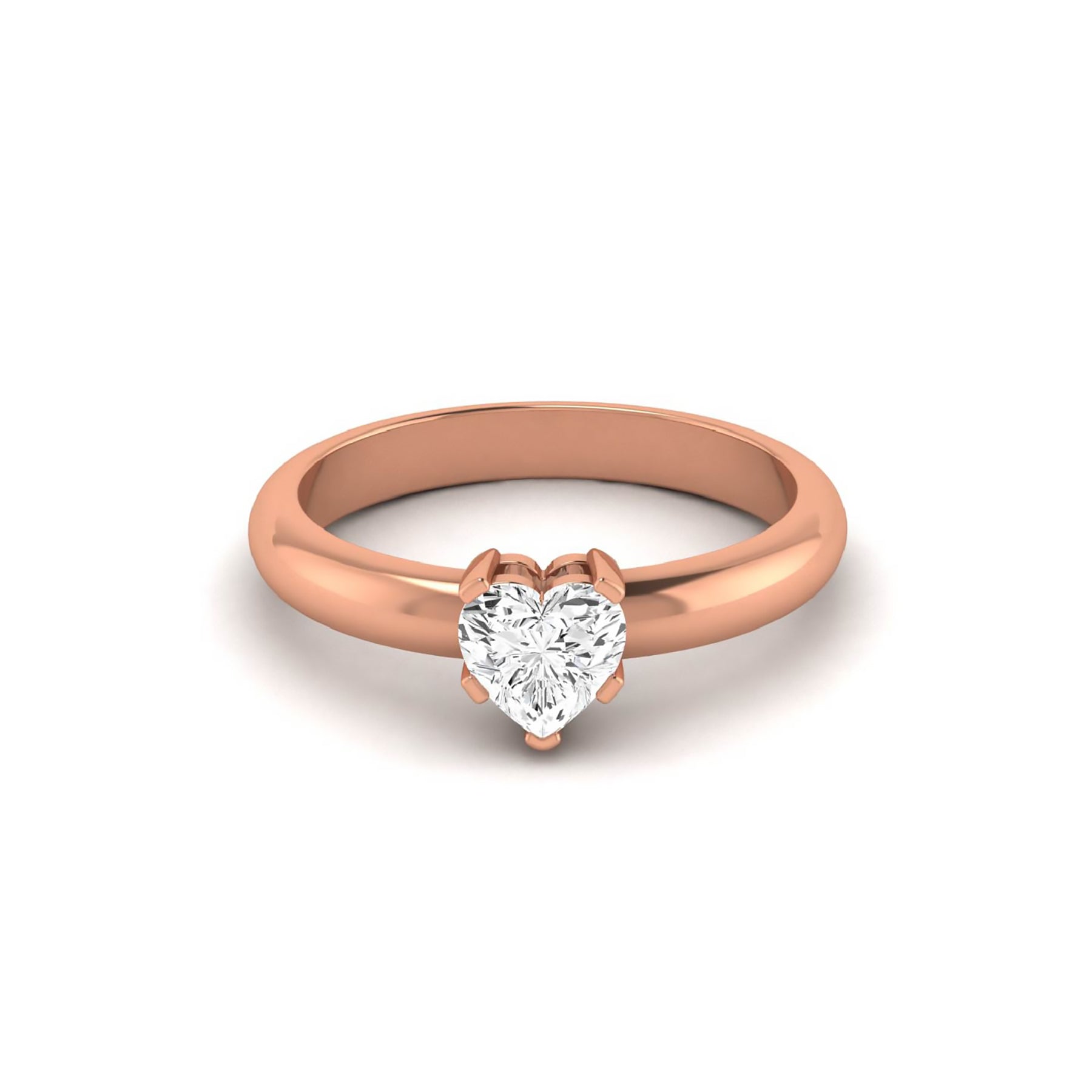Introduction Of Diamonds:
Diamonds are globally graded based on the 4 C's: Carat, Cut, Color, and Clarity. These parameters play a crucial role in determining a diamond's quality and value. In this guide, we will delve into each aspect to help you comprehend the intricacies and make an informed decision when choosing the perfect solitaire.
Diamond Cut: The cut of a diamond significantly influences its beauty. It encompasses proportions, polish, and symmetry, which impact the diamond's brilliance, fire, and scintillation. A well-cut diamond exhibits optimal angles and finish, allowing maximum reflection of light and resulting in a sparkling appearance. Conversely, a poorly cut diamond may appear dark, dull, and lifeless. Therefore, the cut grade holds the utmost importance in determining a diamond's overall beauty.
For round diamonds, the Gemological Institute of America (GIA) grades the cut, polish, and symmetry separately. However, for fancy-shaped diamonds, only the symmetry and polish features are graded, while the cut itself is not assessed.
During the cutting process, diamond cutters face the challenge of balancing the optimal cut to achieve maximum scintillation and the need to retain as much weight as possible. Due to market demand, cutters sometimes sacrifice the cut quality to maximize carat weight. This emphasizes the significance of the Cut grade, as it enables buyers to identify diamonds that were cut poorly to gain more weight.
The Diamond Cut Scale Ranges:

- Excellent: These diamonds are highly reflective and exhibit proportionate cuts.
- Very Good: Diamonds in this range possess well-cut facets and offer substantial reflectivity.
- Good: While most light passing through these diamonds is reflected back, their proportions may be slightly less ideal compared to higher-rated diamonds.
- Fair: Diamonds in this range may exhibit light reflecting out of the bottom or sides. They are usually smaller in size, making their lower shine less noticeable.
- Poor: These diamonds are noticeably dull to the naked eye. They lack proportionality, resulting in reduced reflectivity.
Diamond Color:

The evaluation of diamond color is based on the degree of colorlessness rather than the presence of color. Although most diamonds appear white, not all are truly colorless, as they may exhibit color tints. The presence of such tints is considered undesirable in white diamonds, as they diminish the diamond's sparkle and value. Diamonds are graded on a scale of whiteness or absence of color, ranging from D (rarest and most expensive) to Z (noticeable yellow color).
Color Grade Description:
D: Absolutely colorless.The highest and extremely rare color grade.
E: Colorless.May display negligible traces of color detectable by an expert gemologist. A rare diamond.
F: Colorless.May exhibit very slight color traces visible only to an expert gemologist. Still considered a "colorless" grade. High-quality diamond.
G-H: Near-colorless.Color is noticeable when compared to higher-grade diamonds but offers excellent value. I-J-K-L: Detectable color. Excellent value, particularly when set in yellow-gold Jewellery. M-N: Noticeable pale yellow color. O-Z: Noticeable yellow color.
Choosing the Right Color:
While the difference in appearance between colorless and near-colorless diamonds may be undetectable, the price disparity based on color grade can be significant. For purists seeking utmost colorlessness, D-F range diamonds are preferred. However, diamonds in the G-I range offer great value while still achieving a visually "colorless" look. If opting for larger-sized or higher-clarity diamonds within a budget, J-K-L color diamonds can be considered. Notably, diamonds with pointed ends (e.g., marquise, radiants, pear, and princess-shaped) tend to emphasize color, so selecting diamonds with better colors for these shapes is advisable.
Diamond Clarity:

Clarity refers to a diamond's purity and denotes the presence of inclusions (internal irregularities) and blemishes (external irregularities). Inclusions and blemishes impact a diamond's ability to transmit light and reflect its brilliance. While these imperfections are natural characteristics, they can affect a diamond's scintillation when they are large or numerous. Clarity is graded internationally using the following categories:
- FL (Flawless): Completely clean diamonds with no inclusions or blemishes detectable under 10x magnification. These are exceptionally rare and valuable.
- IF (Internally Flawless): Diamonds with no detectable inclusions but may have minor surface blemishes under 10x magnification. Also rare and highly valuable.
- VVS1/VVS2 (Very, Very Slightly Included): Inclusions and blemishes are extremely challenging to detect even for skilled gemologists under 10x magnification, and usually visible only under a powerful microscope.
- VS1/VS2 (Very Slightly Included): Inclusions and blemishes are detectable under 10x magnification but considered minor flaws that do not affect the diamond's beauty, remaining invisible to the naked eye.
- SI1/SI2 (Slightly Included): Inclusions and blemishes are easily noticeable under 10x magnification and may be visible to the naked eye.
- I1, I2, I3 (Included): Inclusions and blemishes are obvious under 10x magnification and typically visible to the naked eye. These flaws can negatively impact transparency and brilliance.
Choosing the Appropriate Clarity Grade:
Diamonds with fewer flaws receive higher clarity grades. When selecting a clarity grade, it is essential to consider personal preferences and budget. VVS1/VVS2 diamonds provide complete cleanliness, while VS1 or VS2 diamonds appear clean to the untrained eye. SI1 or SI2 clarity grades can be chosen for larger-sized diamonds or better color within a specific budget. An "eye-clean" diamond, without imperfections visible to the naked eye, is an excellent value. SI1 and VS2 diamonds are often considered great value options as their inclusions are minor and invisible to the naked eye. Additionally, as diamond size increases, inclusions become more noticeable, so this factor should be taken into account during the decision-making process.
Diamond Carat:

Diamonds are sold by carat weight, which indicates their size. A carat is equivalent to 0.2 grams, approximately the weight of a paper clip. It's important to note that carat weight is distinct from the term "karat," which refers to gold purity.
While carat weight influences a diamond's size, other factors such as cut, color, and clarity also impact its value. Two diamonds with equal carat weight can have varying costs based on these additional characteristics. As carat size increases, diamonds become increasingly rare, leading to a disproportionate increase in price. Therefore, a 2-carat diamond of a certain quality will be priced higher than twice the price of a 1-carat diamond of the same quality.
Conclusion:
Understanding the 4 C's—Carat, Cut, Color, and Clarity—is crucial when selecting a diamond. Each aspect contributes to a diamond's overall beauty, brilliance, and value. While carat weight indicates size, the cut determines a diamond's sparkle, color grade reflects its whiteness or colorlessness, and clarity indicates its purity. By considering personal preferences, budget, and desired balance among the 4 C's, one can confidently choose the perfect diamond.













